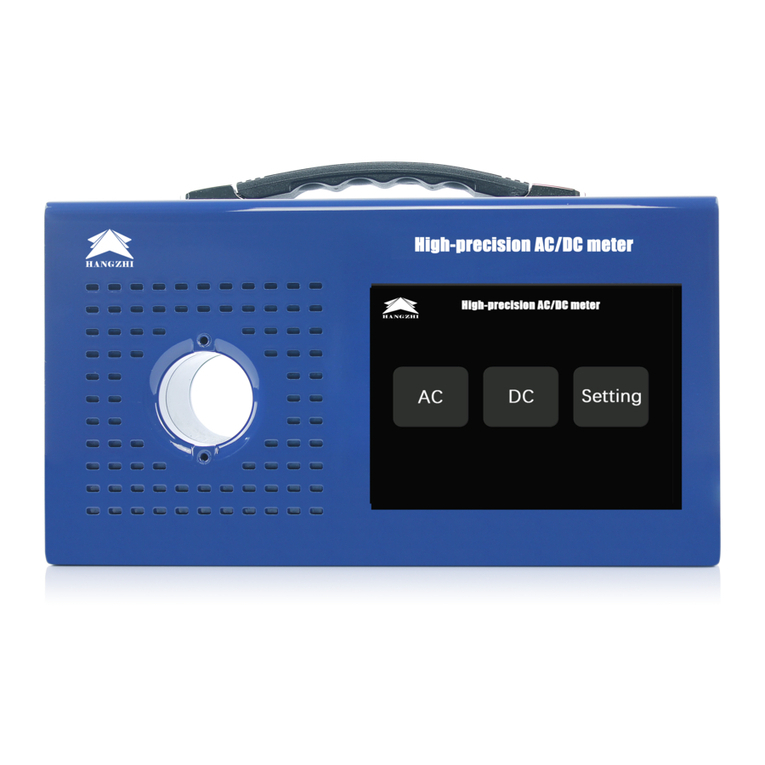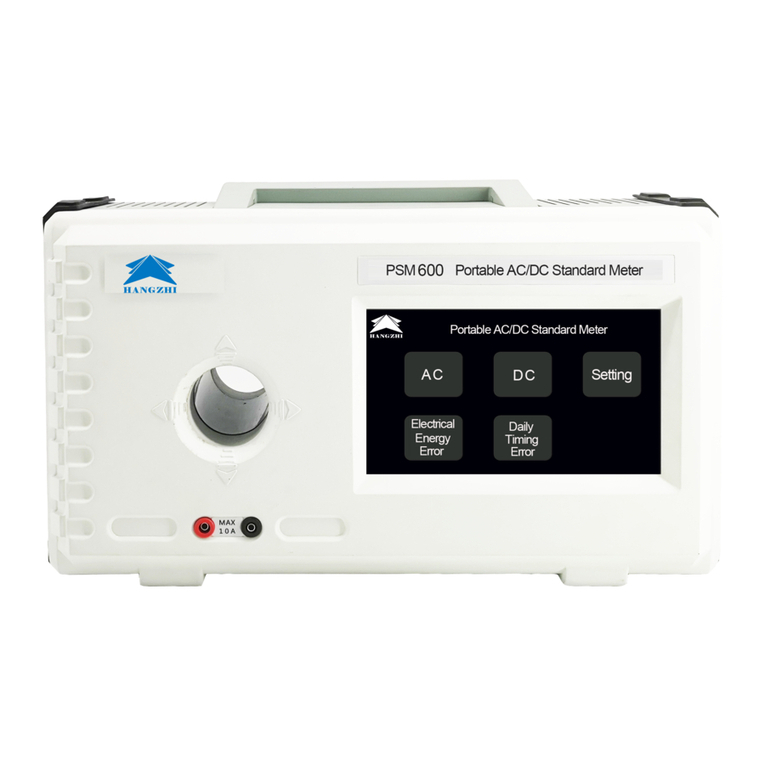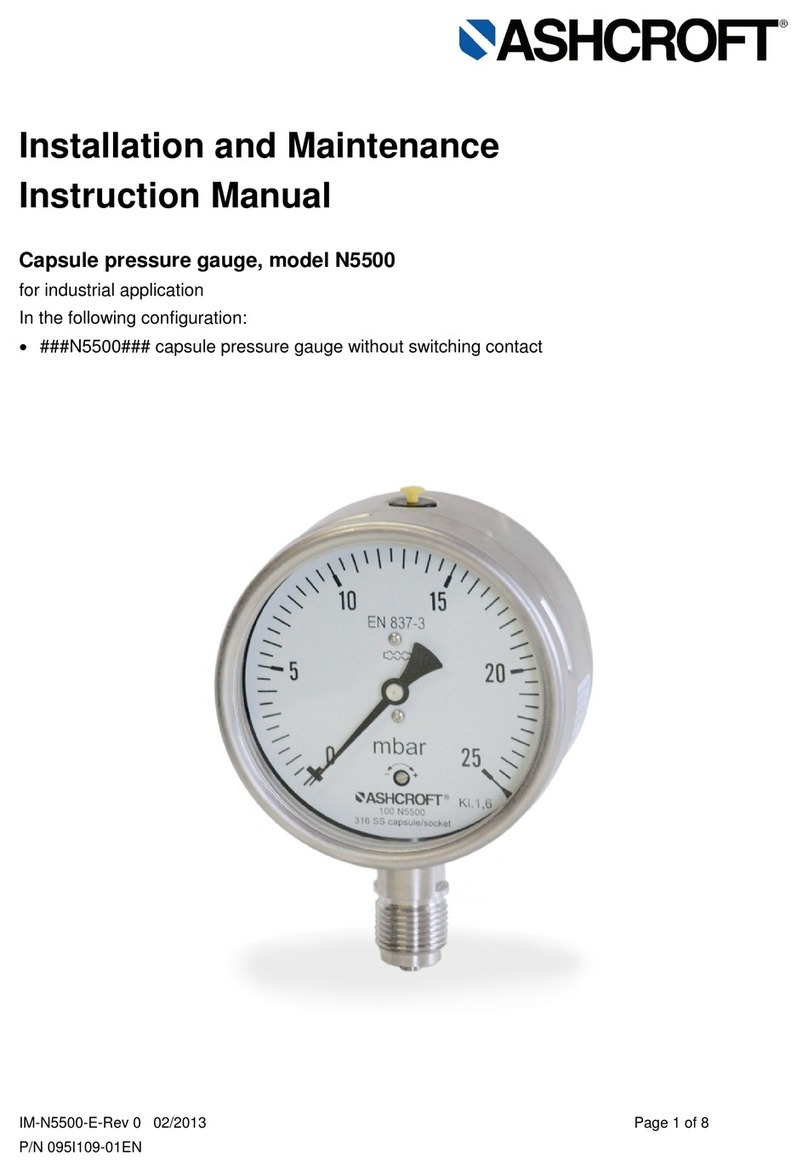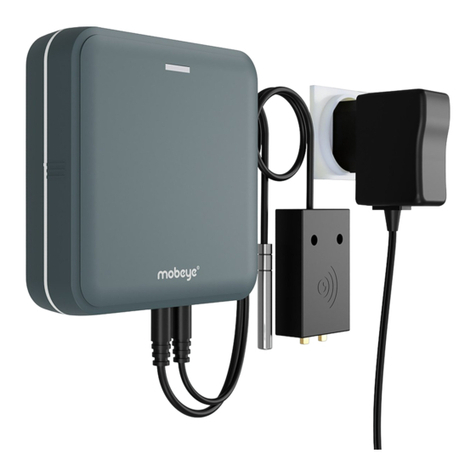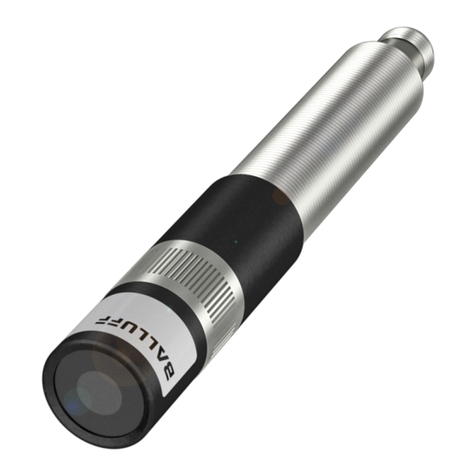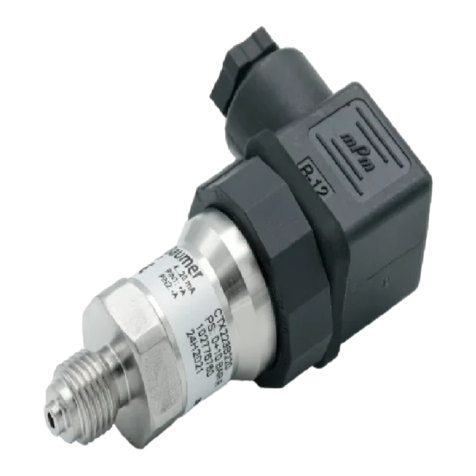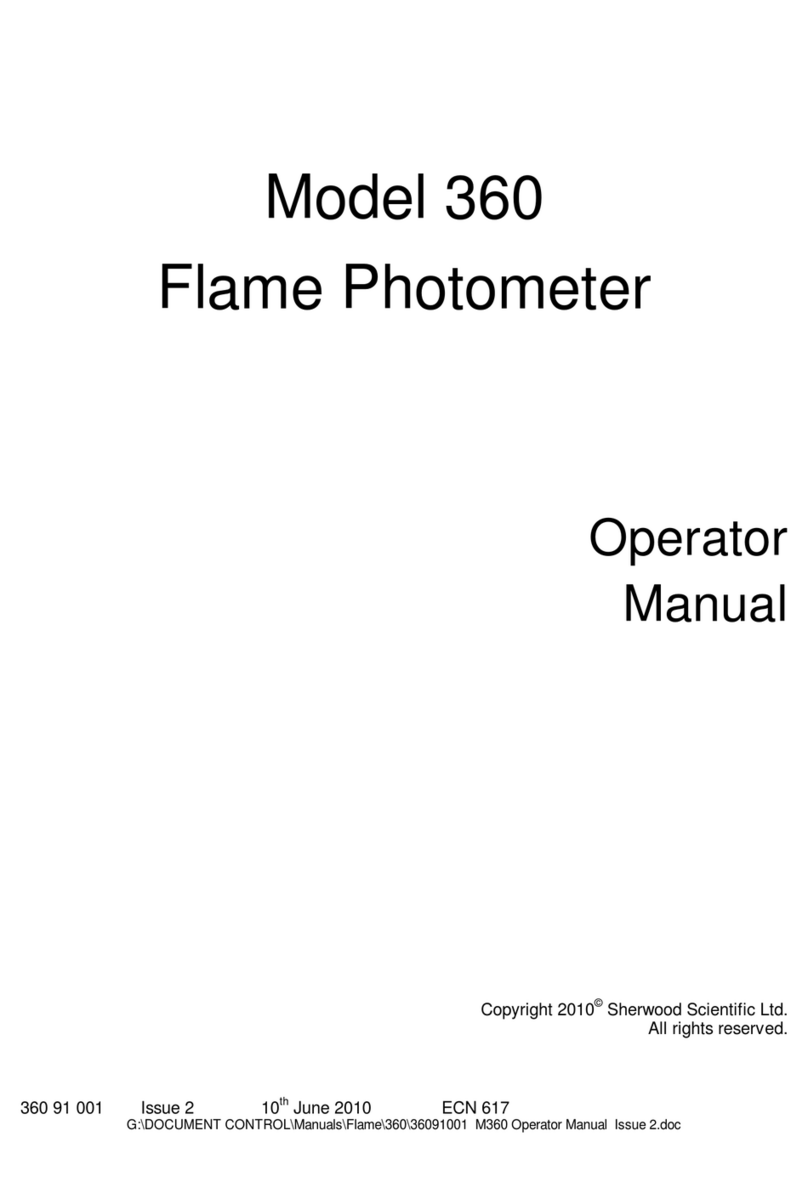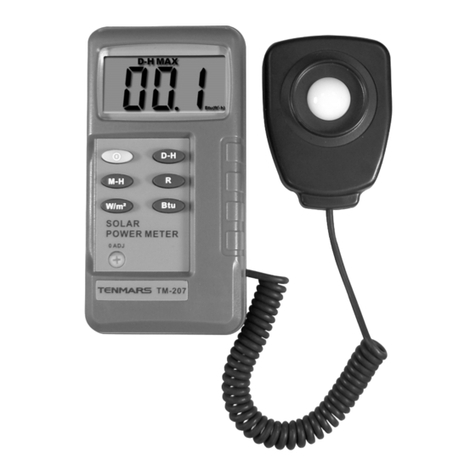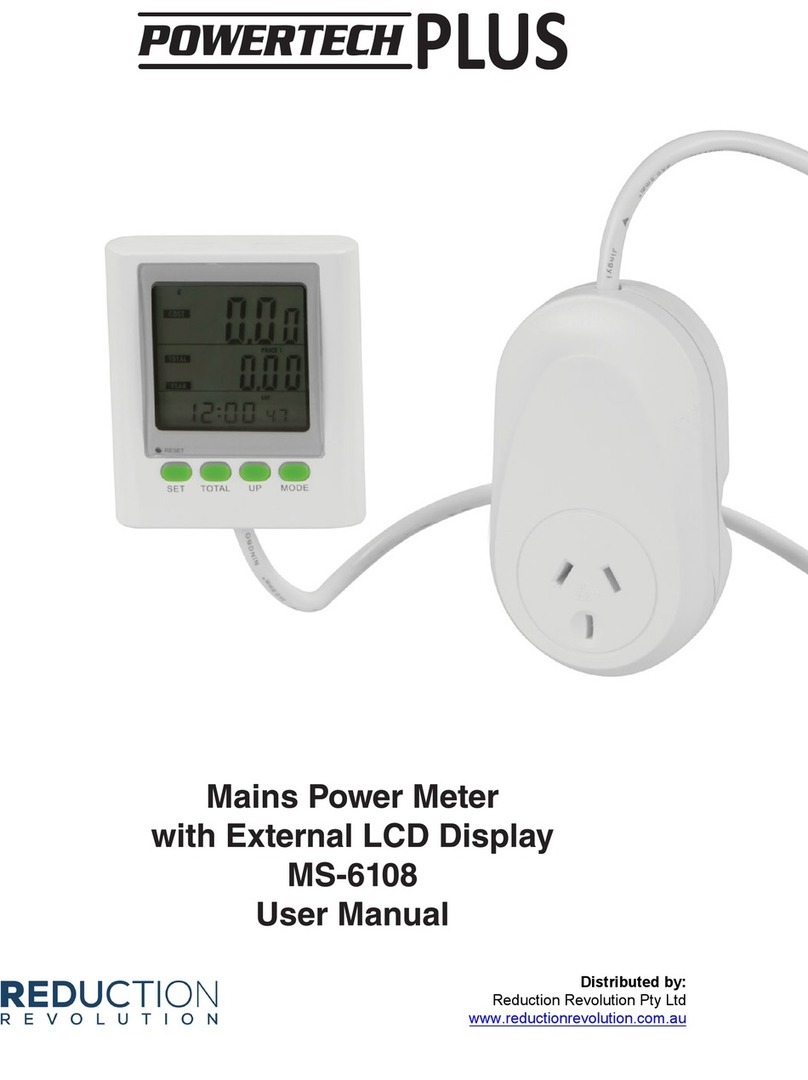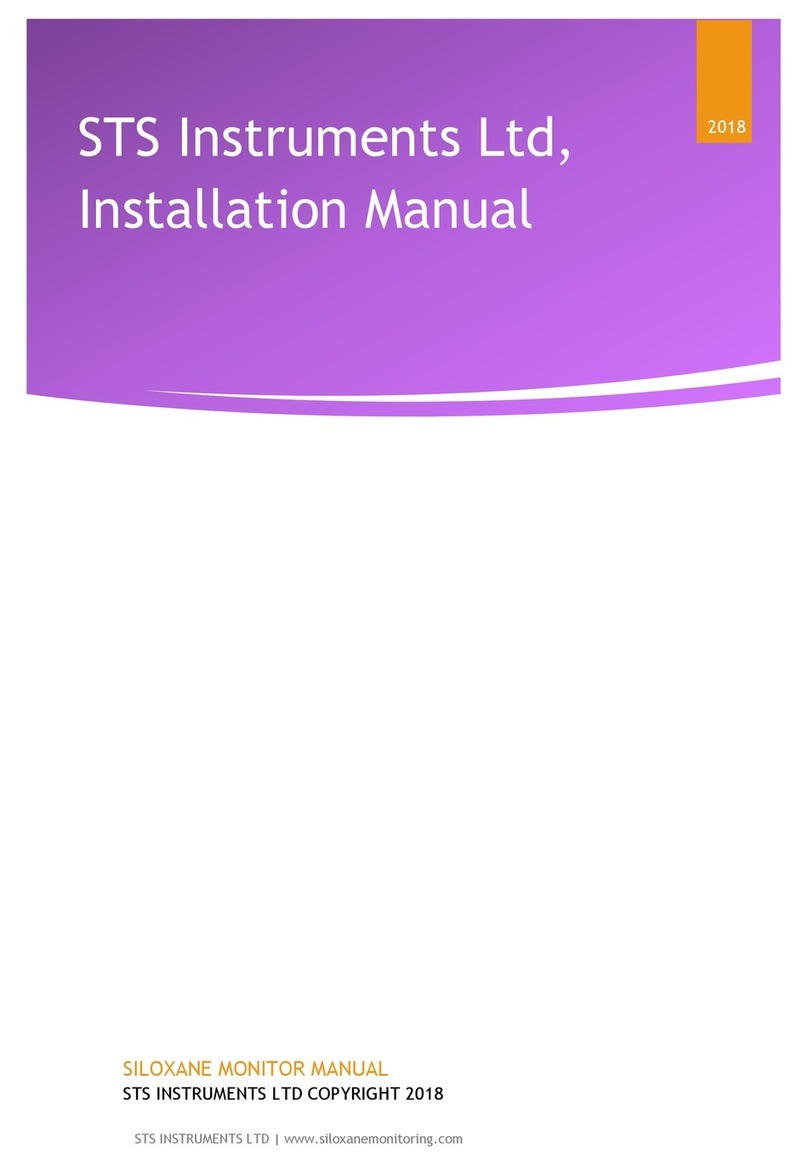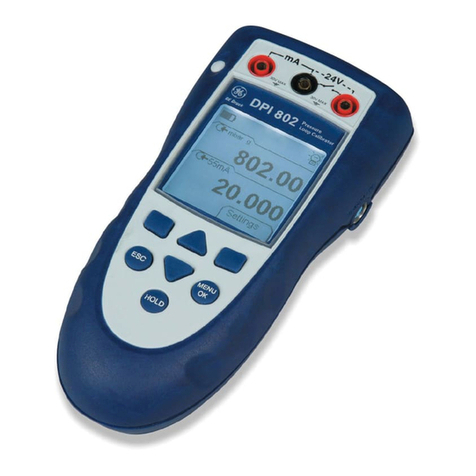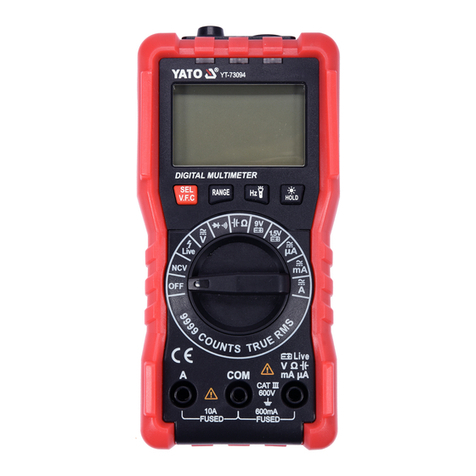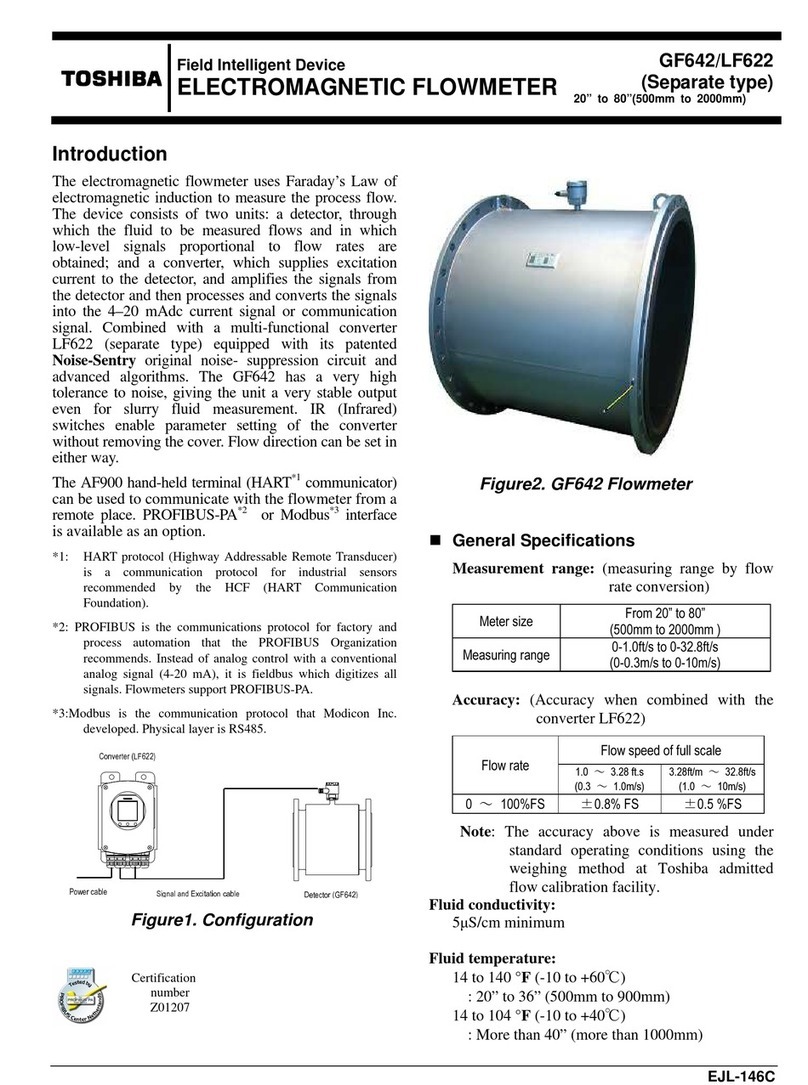Hangzhi PSM Series User manual

1
PSM Series
AC/DC Standard Meter
User Manual
V1.7
Founded in 2017, Shenzhen Hangzhi Precision Electronics Co., Ltd. is a
technology-leading enterprise dedicated to the development, production, sales and
customization of high-precision current transducers and measuring instruments. We will
strive to build a well-known brand of precision current transducers and precision
instruments in the DC field, and become a leading international leader in precision
electronics in the field of DC systems.
Based on multi-faceted technology integration and innovation, Shenzhen Hangzhi
Precision Electronics Co., Ltd. has developed the industry's first high-precision digital
current transducer and an analog current transducer featuring high precision, low costs, low
zero drift and low temperature drift. This series of products reduces industry costs,
improves industry efficiency, enhances user experience, and creates value for customers.
The company's products have won many achievements in the national innovation and
entrepreneurial competition, and won wide attention and support from all walks of life.
As a company with strong sense of responsibility and mission, we adhere to multi-point
zero-flux technology-led approach, with client-oriented service and customized products,
and improve the operating quality by successfully capital financing. We are making our
efforts to build an innovative sharing enterprise.

2
Table of content
1Preface.........................................................................................................................................4
1.1 Packing Checklist.............................................................................................................4
1.2 Accessories.......................................................................................................................5
1.3 About safety......................................................................................................................6
1.4 About label........................................................................................................................7
1.5 About measurement safety level...................................................................................8
1.6 Precautions for use..........................................................................................................9
1.6.2 Placement environment........................................................................................9
1.6.3 Placement method..............................................................................................10
1.6.4 Use of the instrument..........................................................................................10
1.6.5 Before connecting the power cord....................................................................11
1.6.6 Before connecting the test cable ......................................................................11
1.6.7 Before turning on the power..............................................................................11
1.6.8 Before measurement..........................................................................................12
1.6.9 Before connecting the communication cable..................................................12
2Summary....................................................................................................................................13
2.1 Product summary...........................................................................................................13
2.2 Product characteristics..................................................................................................13
2.3 Product composition......................................................................................................14
3Product selection guide and technical parameters.............................................................16
3.1 Product selection ...........................................................................................................16
3.2 Technical parameters....................................................................................................16
4Instructions for use...................................................................................................................19
4.1 Steps................................................................................................................................19
4.2 Instructions of interface.................................................................................................19
4.2.1 Boot interface.......................................................................................................19
4.2.2 Main interface.......................................................................................................19
4.2.3 AC measurement interface................................................................................20
4.2.4 DC measurement interface................................................................................21
4.2.5 Setting interface...................................................................................................23
4.2.6 Power energy error .............................................................................................23
4.2.7 Daily timing error interface.................................................................................24
5Connector information.............................................................................................................25
5.1 DB9 terminal definition(DB9 male)........................................................................25
5.2 Aviation terminal definition............................................................................................25
6Dimensions................................................................................................................................26
7Maintenance and service........................................................................................................27
7.1 Calibration and repair....................................................................................................27
7.2 Instrument transportation..............................................................................................27
7.3 Replacement of parts and life......................................................................................27
7.4 Cleaning..........................................................................................................................27

3
7.5 Frequently Asked Questions........................................................................................27
Attachment1 Communication agreement....................................................................................29
Attachment 2 PSM600 pulse constant comparison table.........................................................30
Attachment 3 PSM1000 pulse constant comparison table.......................................................32

4
1 Preface
Thank you for choosing Hangzhi’s "PSM Series AC/DC Standard Meter". In order to make
full and lasting use of this product, please keep the manual properly. The PSM series
AC/DC standard meter is referred as "this instrument" below.
1.1 Packing Checklist
When this instrument is delivered to you, please check if any abnormalities or damages
occur during transportation before using it. In particular, please pay attention to accessories,
panel, keys and other items. In case of damage or failure to work, please contact the agent
or Hangzhi service center.
Please keep the packaging material for delivery properly for future transportation.
Please make sure that the contents of the packing are correct.
Packing checklist
Item
Product photo
Specifications
Description
□ This instrument
See Part 3
AC/DC standard meter
□ User manual (This
manual)
Soft copy or hard
copy
To describe the
operational method,
specifications, etc.
□ Power line
1.5m/3*0.75 mm2
Rated voltage:250V
Rated current:10A
For power supply
□ Voltage test line
1m/0.8mm2
Rated voltage:CATIII
1000V/CATIV 600V
Rated current:10A
To measure the voltage
input signal

5
□ Small current test
line
1m/0.8 mm2
Rated current:10A
To test small current input
signal
□ Power pulse line
1m/5*0.3mm2
To connect power pulse
input/output interface,
clock pulse input interface
Remarks:
1) This instrument has been programmed when it was manufactured, and the latest
version can be downloaded from the homepage of our company
2) Instructions for use in other languages are available at our website :
http://www.hangzhicn.cn/
1.2 Accessories
This instrument has the following options (to be sold separately). Please contact the agent
or sales center if you need purchase.
Option list
Item
Product photo
Specifications
Description
□ USB to RS232
connection line
1.8m/USB2.0/RS232
It can be used to transfer
PC interface from USB2.0
to RS232
□ RS232
connection line
2m/3*0.3mm2
DB9 Female to
female/23 connection
line
It can be used to connect
between RS232 and
communication interface of
this device.
□ USB to RS485
connection line
1.5m/USB2.0/RS485
It can be used to transfer
PC interface from USB2.0
to RS485.

6
□ RS485
connection line
0.1m/2*0.3mm2
DB9 Female to female
It can be used to connect
between RS485 and
communication interface of
this device.
□ USB extension
line
2.0m/USB2.0/ Male to
male
It can be used for LCD
screen program upgrade.
□ AC adapter
For overseas usage
Power adapter for different
countries
1.3 About safety
The instrument is designed and tested in accordance with IEC61010 safety specifications,
and is shipped in a safe state. In addition, failure to comply with the instructions may
damage the functions provided by the instrument to ensure safety. Before using this
instrument, please read carefully the following safety-related matters.
Danger
If wrong method is used, it may lead to personal accident and instrument failure. Read the
instructions carefully and operate after fully understanding the contents.
It includes electrical hazards such as electric shock, heating, fire and arc discharge caused
by short circuit. Personnel who first use electrical measuring instruments should use them
under the supervision of senior electrical measuring personnel.
Warning

7
1.4 About label
This manual classifies and marks the severity and risk levels of risks as follows.
Danger
A dangerous situation that is highly likely to cause death or
serious injury to the operator is described.
Warning
Situations that are likely to result in death or serious injury to
the operator are described.
Note
Conditions that may result in minor injury to the operator or
expected damage or malfunction of the instrument are
described.
Important
matters
Information or content regarding operations and
maintenance work that must be known in advance are
described
An indication of high voltage hazard is used to warn the risk
of shock, burns and even death from electric shock due to
neglection in safety confirmation or misuse
Prohibited behavior is indicated.
The "mandatory" matter which must be performed is
indicated.
Symbol on the instrument
To indicated caution or danger. When the symbol
is displayed on the instrument, please refer to the
corresponding position in the instruction manual.
To indicate the ground terminal.
To denote direct current (DC)
To denote alternate current (AC)。
To denote power “ON”.
To denote power “OFF”.

8
Symbols related to standard
Marking of regulations on the
abandonment of electrical and
electronic equipment (WEEE
Directive) in EU countries.
Consistent with the restrictions
shown in the EC Ministerial Council
Directive (EC Directive).
1.5 About measurement safety level
In order to use the measuring instrument safely, IEC61010 classifies the measurement into
three safety levels of CAT II to CAT IV according to the places of use.
Danger
◼Using a measuring instrument with a small
classification level in a large numerical level may cause
major accidents, so please avoid this situation absolutely
◼Using a measuring instrument without a classification
mark to measure CAT II to CAT IV may lead to major
accidents, so please avoid this situation absolutely
This instrument is suitable for CAT III 1000 V.
CAT Ⅱ:The primary side circuit of an instrument (movable tool, household appliance, etc.)
with a power cord that connects to the outlet, when the socket is directly
measured.
CAT Ⅲ:Measuring the primary side circuit of an instrument (fixed device) that is directly
powered from the switchboard, and the circuit from the switchboard to the outlet.
T
CAT IV
Electric
meter
Switchboard
Inspection entrance
Usage entrance
Internal wiring
CATIII
CATII
Socket

9
1.6 Precautions for use
In order to use the instrument safely and make full use of its functions, please observe the
following precautions.
1.6.1 Inspection before use
Warning
•If the test cable or the instrument is damaged, it may cause electric
shock. Be sure to do the following checks before using it
•Before using it, please confirm that there are no problems caused
by storage and transportation, and use it after checking and
confirming the operation. If it is confirmed to be faulty, please
contact the agent or the company after-sales center.
•The outer surface of the power cord damage or exposure may
cause an electric shock or short circuit accident. Please do not use,
and contact your dealer or company after-sales center
•The outer skin of the cable damage or metal exposure may cause
short circuit or electric shock. Please replace with a device that is
not damaged.
•Check whether the instrument is damaged. If it is damaged, please
send it for repair.
•When the power is turned on and the start button is lit red, the
power cord may be broken or a malfunction occur inside the
instrument. Please send it for repair.
•After the end of the test (displaying the company LOGO), if the
main measurement function screen is not displayed, a malfunction
may occur inside the instrument. Please send it for repair.
1.6.2 Placement environment
Warning
Please do not place the instrument in the following places,
otherwise it will cause malfunction or accident of the instrument.
•Direct sunlight or high temperature places
•Locations where corrosive gases and explosive gases are
generated
•Places where strong electromagnetic waves are generated
or near charged objects
•Close to induction heating device (high frequency
induction heating device, IH induction cooker, etc.)

10
•Locations where mechanical vibrations are frequent
•Locations affected by water, oil, chemicals and solvents
•Wet, dew condensation
•A place with a lot of dust
1.6.3 Placement method
Warning
Please do not place on unstable pedestals or in inclined places.
Otherwise, personal injury or malfunction of the main unit may occur
due to falling or tipping over.
•Place the bottom side down.
•In order to prevent the temperature of the instrument from rising,
please be sure to keep a specified distance from the surroundings
when placing it.
Above 50mm Above 50mm Above 150mm
The means to cut off the power supply of this instrument is to unplug the power cord. In
case of emergency, the power cord can be unplugged to cut off the power supply
immediately, so please make sure that there is enough space for operation.
1.6.4 Use of the instrument
Danger
To prevent an electric shock, never remove the main unit casing, since
there are high voltage and high temperature parts inside.
Note
In order to prevent damage to the instrument, please avoid vibration
and collision during handling and use, and pay attention to collisions
caused by falling.

11
1.6.5 Before connecting the power cord
Warning
To avoid electric shock and to ensure the safety of this instrument,
please connect the supplied power cord to a three-phase outlet.
1.6.6 Before connecting the test cable
Danger
Be sure to connect the test cable to the secondary side of the circuit
breaker. Even if a short circuit occurs on the secondary side of the
circuit breaker, the short circuit current is cut by the circuit breaker. The
current capacity on the primary side is very large, and in the event of a
short circuit accident, damage to the instrument or equipment may
occur.
Warning
To avoid electric shock and short circuit accidents, please use the
specified test cable.
1.6.7 Before turning on the power
Warning
Before turning on the power, please confirm whether the power
voltage listed on the power connection of the instrument and the one
you are using are consistent.
Using the power supply voltage outside the specified range may cause
instrument damaged or an electrical accident.
Note
Do not use UPS and DC-AC inverters with square wave or
approximate sine wave output to drive this instrument to avoid damage
to this instrument.

12
1.6.8 Before measurement
When measuring voltage
Danger
•The maximum in-phase voltage of the voltage measurement terminal
is as follows.
CAT II:AC/DC 300 V
Without measurement classification:AC/DC 800 V
Exceedance of this voltage may cause damage to the instrument or
cause personal injury.
•The maximum input voltage of the voltage measurement terminal is
DC 1000 V, 1100 V peak。
When the voltage exceeds 800V, it can be measured only when the
object to be tested is insulated from the ground. Exceedance of this
voltage may cause damage to the instrument or personal injury.
•To prevent an electric shock, do not use the test cable tip to avoid
short circuit in the voltage-applied circuit.
1.6.9 Before connecting the communication cable
Note
When connecting or removing the communication cable, please be sure to
turn off the power of the instrument and the connected device. Failure to do
so may result in false action or malfunction.

13
2 Summary
2.1 Product summary
PSM series AC/DC standard meter is a new generation of standard meter produced by our
company. The product adopts a new software and hardware design, which can
simultaneously measure single-phase AC and DC voltage, current, frequency, phase,
active power, reactive power, inspecting power, power factor, active energy, and reactive
energy etc., at the same time, high-order harmonic distortion (up to 63 harmonics) can be
measured. It can be widely used in metrology research institutes, government inspection
agencies and other metrology fields for the metrological verification of single-phase AC and
DC voltmeters, ammeters, electric energy meters and power meters. The module complies
with national metrological verification procedures and industry standards as follows:
➢Metrological verification regulations
《JJG 842-2017 Electronic DC energy meter》
《JJG 597-2005 AC energy meter verification device》
《JJG 566-2012 Electronic AC energy meter》
2.2 Product characteristics
➢To measure single-phase AC and DC voltage, current, frequency, phase, active
power, reactive power, inspecting power, power factor, active energy, and reactive
energy etc.
➢To detect power error and daily timing error
➢To perform electric energy test
➢To record curve in real time U(t), I(t), P(t), E(t)
➢Ripple test can be performed to detect AC ripple below 1 kHz
➢To measure the stability of single-phase AC and DC voltage, current and power
➢To measure the distortion of voltage and current, perform 2~63 harmonic analysis,
display real-time harmonic components, harmonic content, harmonic distortion, etc.
➢Equipped with energy pulse input interface which can be used for real-time
verification of various active energy meters, reactive energy meters, etc.
➢Equipped with standard energy pulse output interface for automatic setting of pulse
constant
➢Equipped with RS232, RS485 and CAN communication interfaces, so that it can
communicate directly with PC
➢Built-in high-precision temperature and humidity sensor for easy correction of
environmental temperature and humidity error
➢Multi-range can be switched automatically for voltage and current, and 120% of
measuring range limit can be reached
➢Equipped with product program online upgrade function

14
2.3 Product composition
Front
1
Company logo
Company logo
2
Product model
The model and name of the
corresponding product
3
Current measuring
hole
Perforation in the specified direction
when measuring large currents
4
Small current
measuring terminal
block
Terminals that are directly inserted
during small current measurement, with
red terminals connected to current
input, and black terminals connected to
current output.
5
Display area
For user interaction, display
measurement data, parameter settings,
etc.
Back
6
Product serial
number
The unique serial number of the product
7
Vents
For body cooling

15
Left
8
DB9 interface
Used for RS232, RS485, CAN communication
9
USB interface
Used for display program upgrade
10
Aviation interface
For pulse input and output
11
Manufacturing nameplate
For management purpose, please don’t peel off.
12
Ground terminal
Used to connect to the ground when using this
instrument
Right
13
Voltage measurement
terminal
Terminals that are directly inserted during voltage
measurement, with red terminals connected to
positive voltage, and black terminals connected to
negative voltage.
14
Power input and main power
switch
To connect power and for ON/OFF of the main
power
15
Fan hole
For body cooling

16
3 Product selection guide and technical parameters
3.1 Product selection
PSM series product selection
PSM600
PSM1000
AC voltage
measurement
1V~707V
AC current
measurement
200mA~424A
400mA~707A
DC voltage
measurement
1V~1000V
DC current
measurement
200mA~600A
400mA~1000
A
AC accuracy
0.05%
DC accuracy
0.02%
3.2 Technical parameters
PSM series technical parameter
PSM600
PSM1000
AC
voltage
measurem
ent
Measuring
limit
35V, 71V, 141V, 354V, 707V
Measuring
range
(0~110%)RG
Accuracy
±0.05%RD (20V≤U≤707V)
±0.1%RD (1V≤U≤20V)
Resolution
0.01%RG
AC
current
measurem
ent
Measuring
limit
200mA, 8A, 17A, 42A, 85A,
170A, 424A
400mA, 14A, 28A, 71A, 141A,
354A, 707A
Measuring
range
(0~110%)RG
Accuracy
±0.05%RD(200mA≤I≤424A)
±0.05%RD(400mA≤I≤707A)
Resolution
0.01%RG
DC
voltage
measurem
ent
Measuring
limit
10V, 20V, 50V, 100V, 200V, 500V, 1000V
Measuring
range
(0~110%)RG

17
Accuracy
±0.02%RD(10V≤U≤1000V)
±0.05%RD(1V≤U≤10V)
Resolution
0.005%RG
AC
voltage
measurem
ent
Measuring
limit
200mA, 12A, 24A, 60A, 120A,
240A, 600A
400mA, 40A, 100A, 200A,
400A, 1000A
Measuring
range
(0~110%)RG
Accuracy
±0.02%RD(200mA≤I≤600A)
±0.02%RD(400mA≤I≤1000A)
Resolution
0.005%RG
Power
measurem
ent
AC power
measuring
accuracy
±0.05%RD(20V≤U≤707V,
200mA≤I≤424A)
±0.05%RD(20V≤U≤707V,
400mA≤I≤707A)
DC power
measuring
accuracy
±0.02%RD(10V≤U≤1000V,
200mA≤I≤600A)
±0.02%RD(10V≤U≤1000V,
400mA≤I≤1000A)
Electric
energy
measurem
ent
AC Electric
energy
measuring
accuracy
±0.05%RD(20V≤U≤707V,
200mA≤I≤424A)
±0.05%RD(20V≤U≤707V,
400mA≤I≤707A)
DC Electric
energy
measuring
accuracy
±0.02%RD(10V≤U≤1000V,
200mA≤I≤600A)
±0.02%RD(10V≤U≤1000V,
400mA≤I≤1000A)
Phase
measurem
ent
Measuring
range
0.00°~359.99°
Accuracy
±0.02°(20V≤U≤707V,
200mA≤I≤424A)
±0.02°(20V≤U≤707V,
400mA≤I≤707A)
Resolution
0.001°
Frequency
measurem
ent
Measuring
range
40Hz~70Hz
Accuracy
±0.01Hz
Resolution
0.001Hz
Ripple
measurem
ent
Accuracy
±0.05%RG
Bandwidth
≤1kHz

18
Power
pulse
output
Power pulse output parameter (r/kwh) can be set from 1 to 2,000,000,000,
and the maximum pulse frequency is 160kHz.
The power pulse is a TTL/CMOS compatible level output with a load capacity
greater than 20 mA.
The default pulse output frequency is 0.2Hz~160KHz.
Power
pulse
input
The calibration of the energy meter pulse constant (r/kWh) is set from 1 to
2,000,000,000.
The setting range of the check circle is from 1 to 999,999,999.
The maximum received pulse frequency is 50 kHz
Daily
timing
pulse
input
Clock frequency (Hz) setting range is from 0.01 to 50,000.00.
The setting range of the check circle is from 1 to 999,999,999.
The maximum received pulse frequency is 50kHz。
Other
parameter
s
Working
power voltage
range
AC85V~265V,50/60Hz
Power
consumption
<30VA
Preheat time
≤30 minutes
Working
temperature
10℃~35℃
Relative
humidity
≤85%,Non-corrosive gas
Dimensions
Around 373mm×211.5mm×131.5mm(Length× Width× Depth)(No
protrusions)
Weight
1.5kg
Remarks:
1. Measuring range automatically switched
2. RD-Reading value,RG-Range value

19
4 Instructions for use
4.1 Steps
1) Place the instrument
2) Check before measurement
3) Connect the power cord
4) Connect the test cable
5) Turn on the power
6) Start measuring
7) Record data
8) Measurement completed
4.2 Instructions of interface
4.2.1 Boot interface
The boot interface is displayed within 1-2 seconds after the power is turned on, and the
boot interface is as shown below.
4.2.2 Main interface
After the boot screen, the main screen as shown below will appear. The main interface has
a total of 5 buttons, which are AC, DC, settings, electrical energy error and daily timing
error.

20
4.2.3 AC measurement interface
After clicking the “AC” button on the main interface, the AC measurement interface as
shown below will appear. The AC interface can display voltage, current, frequency, phase,
and active power.
Click “Heavy current”or “10A”to select corresponding gear while “Heavy current”can be
used in direct perforation measurement, "10A" can be used when accessing 10A small
current.
Click the "Word test" to enter the AC word test interface.
Other manuals for PSM Series
1
Table of contents
Other Hangzhi Measuring Instrument manuals
